Parc Unesco de la vallée Jeolgolgyegok à Cheongsong (절골계곡-청송 국가지질공원)절골협곡 (청송 국가지질공원)
14.0 Km 35256 2021-02-16
Gyeongsangbuk-do, Cheongsong-gun, Juwangsan-myeon, Jusanjiri, San124
+82-54-870-6111
La vallée Jeolgolgyegok se situe au sud-est du mont Juwangsan et se caractérise par son eau pure. Avec ses roches étonnantes et sa dense forêt, la vallée Jeolgolgyegok vous propose des randonnées pleines d'émerveillement.
A environ 1km de la vallée, vous trouverez le lac de Jusanji.
Cheonji Sikdang (천지식당)
14.3 Km 35 2021-03-24
90, Utjangteo-gil, Andong-si, Gyeongsangbuk-do
+82-54-822-7008
You can eat maeuntang (fish stew) made with fresh freshwater fish. This Korean dishes restaurant is located in Andong-si, Gyeongsangbuk-do. The representative menu is spicy freshwater fish stew.
Etang Jusanji (주산지)
14.3 Km 3398 2023-01-12
Juwangsan-myeon, Cheongsong-gun, Gyeongsangbuk-do
+82-54-870-6111
Jusanji, situé dans le parc national de Juwangsan de hanjarak, désigne un petit lac niché entre des monts.
Il a été construit vers 1720. Pendant 300 ans, il a servi de réservoir d’eau pour les habitants aux alentours et pour l’irrigation de leurs champs. Le lac mesure environ 100 m de long, 50 m de large pour 7-8 m de profondeur. Malgré les différentes périodes de sècheresse, le lac a toujours su survivre aux différentes intempéries.
Dans les environs de Juwangsan, on trouve également une petite forêt dense alors que le lac est entouré notamment par une trentaine de saules d’une 150aine d’années.
Afin de mieux apprécier Jusanji, les saisons les plus belles sont le printemps et l’automne.
Aux alentours de Jusanji se trouve la route de Naejuwang, avec ses chemins tortueux et ses lieux très difficilement accessibles au fin fond de la montagne (les chemins de randonnées autour du lac en montagne sont régulièrement fermés au public) .
Le site du lac est également au centre du film du réalisateur Kim Ki-duk, « Printemps, été, automne, hiver et printemps ». Le fameux pavillon au centre du lac présent dans le film a été construit pour le tournage, il n'est plus visible sur le site.
Village Dudeul de Yeongyang (영양 두들마을)
15.3 Km 17496 2020-02-10
62, Dudeulmaeul-gil, Yeongyang-gun, Gyeongsangbuk-do
+82-10-7373-8337
Le village Dudeul à Yeongyang signifie 'le village sur la colline'. En 1640, le professeur Seokkye Isimyeong fuit la guerre du Manchu avant de venir vivre dans le village avec ses descendants. On dit aussi que ce lieu a servi d'hôtpital publique durant la période Joseon.
On peut retrouver dans le village l'ancienne maison du professeur Seokkye ainsi que la salle où il enseignait. On retrouve également un centre de recherche en littérature, le premier restaurant en hangeul du pays, etc. Le site est aussi connu pour ses ressources naturelles, sa rivière environnante et ses falaises. Depuis 1994, il est classé comme village culturel par le gouvernement.
Suaedang [Korea Quality] / 안동 수애당 [한국관광 품질인증]
17.8 Km 71641 2023-04-13
1714-11, Sugogyonggye-ro Imdong-myeon, Andong-si, Gyeongsangbuk-do
+82-54-822-6661
'Suaedang Traditional House was built by Ryu Jin-geol, also known by his pen-name of Suae, in 1939. This hanok-style house consists of three buildings that measure 29-kan (a traditional measurement that corresponds to the space between two columns) in total.
The main room, or jeongchim (7-kan at front and 2-kan at sides), has a half-hipped roof, and forms a‘ㄱ’-shape with the storeroom (10-kan at front), which also has a half-hipped roof. Originally located at 612 Sugok-dong, Andong-si, the house was relocated from a slight slope to a flat piece of land due to the construction of Imha Dam in 1987. Consequently, the Jeongchim was rebuilt at a lower level than before.
The Suaedang was renovated by modernizing the old-style facilities including the kitchen, toilets, and washroom without changing their external features, while the rooms and daecheongmaru (main floored room) were decorated with red clay and natural paint. Suaedang, with its beautiful panoramic view of the lake, was designated as Gyeongsangbuk-do Cultural Property No. 56.
Jeongjae Head House [Korea Quality] / 정재종택 [한국관광 품질인증]
18.7 Km 7775 2023-04-13
경상북도 안동시 임동면 경동로 2661-8
+82-10-8590-0625
Boasting more than 300 years of tradition, Jeongjae Traditional House is the head house of Ryu Chi-myeong (pen-name: Jeongjae), who inherited the study of Togye Yi Hwang (1501-1570), one of the two most prominent Korean Confucian scholars of Joseon. The old house features the characteristic construction elements of a Joseon hanok, including the stylobate, wooden pillars, toenmaru (the narrow wooden porch running along the outside of the building), tiled roof, and other structures, and commands an open view of Imha Lake. The house was originally built by Ryu Gwan-hyeon, the great-great-grandfather of Ryu Chi-myeong, in 1735 (the 11th year of the reign of King Yeongjo of Joseon) in the village of Handeul in Imdong-myeon, Andong-si, Gyeongsangbuk-do, but it was relocated to the foot of Guamsan Mountain in 1987 when Imha Dam was built and the surrounding area was submerged as a result. The house consists of the daemunchae (gate building), jeongchim (a ‘ㅁ’-shaped house with a tiled roof), haengnangchae (servants’ quarters), a shrine, and a pavilion. The sarangchae (men’s quarters) is clearly visible, while the anchae (women’s quarters) is concealed within the house. The sarangchae has a sarangmaru (wooden floor), a large sarangbang room, a small sarangbang room, and there is a small maru between the two rooms. The buildings of the sarangchae and anchae are clearly divided into segregated spaces for men and women according to Confucian tradition. The anchae has a daecheongmaru (large wooden floor) in the middle; a main room, kitchen, and toilet on the right; and a numaru (upper floor) and sangbang (upper room) on the left. The small side door of the main gate links to the door by which to enter the anchae, which has a small vegetable garden. Manujeong Pavilion (Gyeongsangbuk-do Cultural Heritage Material No. 37) is a half-hipped roof building with single-layered eaves located on the left side of the house outside the main gate. It is the place where Ryu Chi-myeong used to teach his students, and consists of a large maru and a guest room. The pavilion is also surrounded by the beautiful scenery of Imha Lake, mountains, and chestnut trees. Jeongjae Traditional House provides two special experience programs: Making Songhwaju, which is the Ryu family’s home-brewed liquor (15 to 18 degrees) made with rice, glutinous rice, yeast, pine needles, and chrysanthemums, led by the owner’s wife (Intangible Cultural Asset No. 20); and Making Tarak, which is a fermented milk drink that has been made by the Ryu’s family for some 500 years. As the recipe for making Tarak is relatively simple, and uses yeast that is usually used to make raw rice wine like Makgeolli, people can easily make it at home. The house also runs a traditional music program designed to show participants how to play the gayageum (Korean zither with twelve strings) and sing Korean folk songs, and stages small concerts.
La Forêt Geumbong (금봉자연휴양림)
18.8 Km 7881 2021-06-01
114, Hyuyangnim-gil, Oksan-myeon, Uiseong-gun, Gyeongsangbuk-do
+82-54-830-6001
La Forêt de Geumbong (금봉 자연 휴양림) est située à Uiseong dans la province Gyeongsangbuk-do. Vous pouvez voir des pommiers en fleurs au printemps, profitez de l’eau fraîche et du chant des cigales en été, du feuillage magnifique en automne, et des paysages enneigés splendides en hiver. Il existe beaucoup de sentiers de randonnée autour de la forêt Geumbong, ainsi que des promenades dans la vallée Cheongseokgol pour vous resourcer dans la nature. Egalement presents, des cabanes faites de chêne, de pin, de bouleau blanc et d'épinette.
* Adultes 1.000 wons / groupe 800 (plus de 20 personnes)
* Jeunes 800 / groupe 500 wons (plus de 20 personnes)
* Enfants 300 won / groupe 200 wons (plus de 20 personnes)
Imhaho Gisa Sikdang(임하호기사님식당)
19.1 Km 194 2021-04-09
8, Seonchakjang-gil, Andong-si, Gyeongsangbuk-do
+82-54-822-4929
There are a variety of side dishes, so you can enjoy different foods. This Korean dishes restaurant is located in Andong-si, Gyeongsangbuk-do. The representative menu is kimchi stew.
Oryuheon House [Korea Quality] / 오류헌 [한국관광 품질인증/Korea Quality]
19.3 Km 5 2023-04-13
18-15, Gireumaje-gil, Andong-si, Gyeongsangbuk-do
Oryuheon House, located near Imhaho Lake in Andong, Gyeongsangbuk-do, offers a chance to stay in a historic house from the Joseon period. The house, also known as Mogwa House, was built by Kim Won-jung, the third son of Sukjong-era rector of the National Academy Kim Bang-geol, when he formed a family of his own in 1678. It was designated as the National Folk Cultural Heritage No. 184. The door’s wooden frame and the open floor space exemplify the beauty of the literati house of the Joseon period, while the sarangchae (men’s quarters) and daemunchae (gate quarters) showcase the sophisticated architecture of the era. Anchae (women’s quarters) retains its original appearance, while the sarangchae was rebuilt in 1920. The construction of the Imha Dam in 1990 resulted in the house’s relocation to its present location.
The owner of the house resides in anchae and sarangchae. Guests have access to a space that includes a 2-kan room, which can accommodate up to 4, an open floor space, and a bathroom. Cooking is prohibited in the house, but guests can make use of a grill located on a small yard reserved for the guests. Korean-style breakfast, including menus like chicken porridge or lotus leaf rice, are offered free of charge in the morning. Nearby sights include the water sports activities in Imhaho Lake, Manhyujeong Pavilion, Hahoe Village, and Dosanseowon Confucian Academy.
Vallée Cheongsong Eoreumgol (청송 얼음골)
19.6 Km 9548 2021-03-04
Juwangsan-myeon, Cheongsong-gun, Gyeongsangbuk-do
+82-54-870-6111
Cheongsong, dans la province de Gyeongsangbuk-do, est connu pour son eau de très haute qualité. La vallée Cheongsong Eoreumgol se situe dans la vallée Okgye à Yeongdeok, dans le comté de Cheongsong-gun.. Dans cette vallée mystérieuse l’eau gèle au pic de l’été et fond lorsque les températures tombent sous 32 degrés celsius. La chose la plus étonnante est que plus les températures sont élevées et plus la glace est épaisse !
Beaucoup visitent ce lieu en été pour goûter l’eau fraîche ou profiter de la vue pittoresque des formations rocheuses environnantes et des temples à proximité. Il y a également une falaise nommée Wonja Rock juste à côté de la vallée de glace, qui soulage de la chaleur et qui offre aux visiteurs une belle vue sur la cascade artificielle de 62 mètres de hauteurs. En hiver, la cascade est gelée et beaucoup de visiteurs viennent pour escalader le mur de glace ou participer la compétition annuelle d’escalade du mur de glace. Même si vous n’êtes pas un grand sportif, le mur brillant d’eau glacée rend le site magnifique et l’hiver devient la saison favorite des photographes du pays.

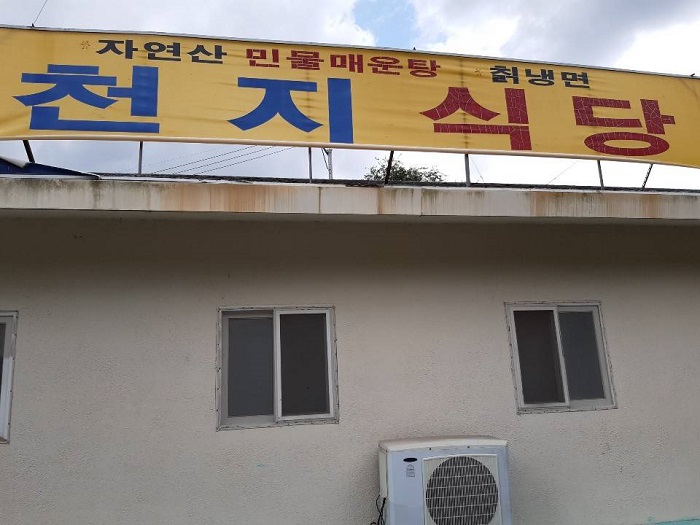
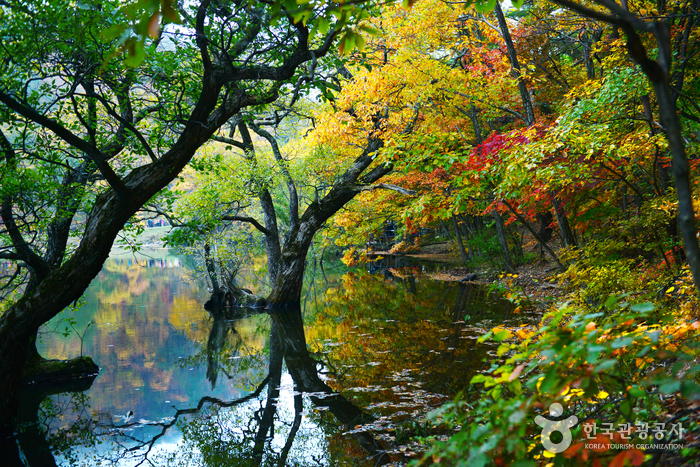
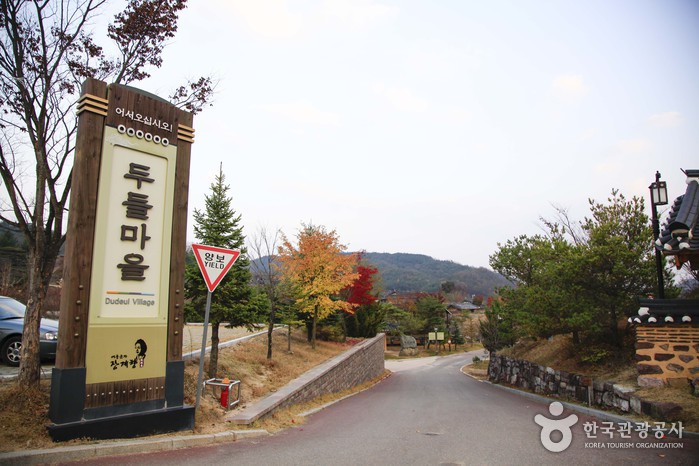
![Suaedang [Korea Quality] / 안동 수애당 [한국관광 품질인증]](http://tong.visitkorea.or.kr/cms/resource/88/2528888_image2_1.jpg)
![Jeongjae Head House [Korea Quality] / 정재종택 [한국관광 품질인증]](http://tong.visitkorea.or.kr/cms/resource/96/2579496_image2_1.jpg)
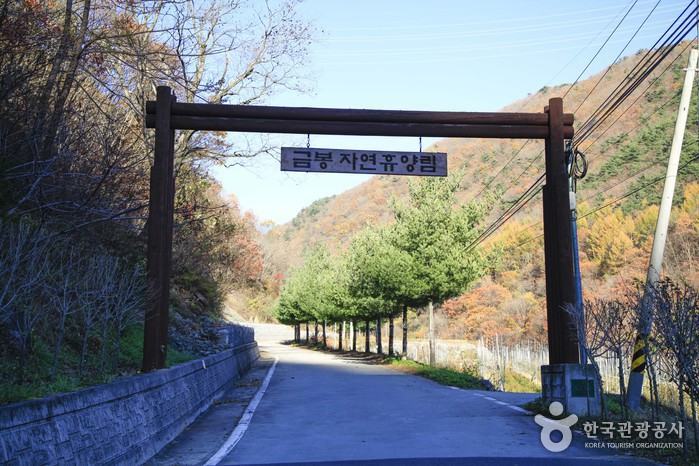
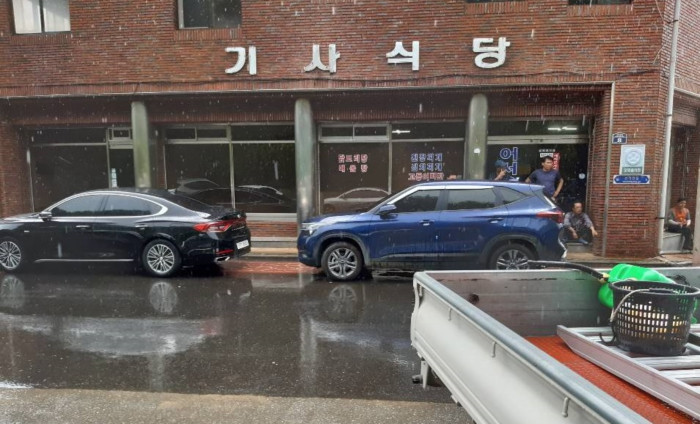
![Oryuheon House [Korea Quality] / 오류헌 [한국관광 품질인증/Korea Quality]](http://tong.visitkorea.or.kr/cms/resource/29/2706129_image2_1.jpg)
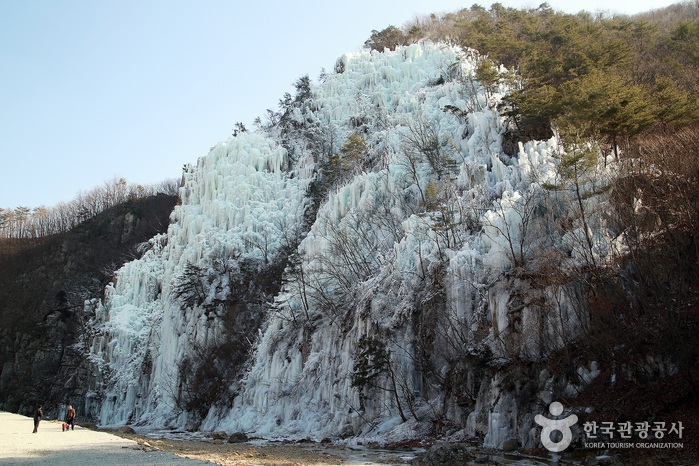
 Français
Français
 한국어
한국어 English
English 日本語
日本語 中文(简体)
中文(简体) Deutsch
Deutsch Español
Español Русский
Русский